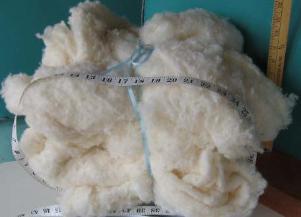
One craft that I have yet to delve into is the art of making a softie. These cute creatures, some with faces only a mother would love, abound on the internet. I would even say that there is a softie explosion of popularity happening right now with all the attention being made to creating your very own cute and cuddly creature.
There are several books devoted to softies and plushes, as well as quick and easy tutorials on creating a softie. And don’t forget the plethora of amigurumi. Heck, there’s even a gallery showcasing some of the best plush makers around.
With all the craft love for the softie, how can we make them a bit more lovable for the Earth? It’s all in the stuffing.
There are a couple of greener options that you can use to stuff your softie with:
- The amazing NearSea Naturals offers an organic cotton stuffing by the pound. All of NearSea Naturals’ products are made in the U.S. and are organic. By choosing organic stuffing you can help reduce the need for pesticides that are used to grow conventional cotton.
- Wool stuffing is also an option. Found at Magic Cabin and Joy’s Waldorf Dolls online, wool is a fiber that just can’t be beat in terms of being a renewable resource.
- Available at big craft stores like JoAnn’s and off of Amazon, you can find Eco-Friendly Fiberfill. This fill is a corn based fiber and is hypo-allergenic. The Wortsted Witch did a run down of the pros and cons of this fill here.
- If you are like me, you have lots of fabric scraps that you just can’t get rid of. These fabric scraps can be used to stuff your plush project. Just cut up your leftover fabric pieces to manageable, stuffable sizes and have at it.
Been using any of the above products or another eco-friendly option to fill your plush? Let us know in the comments.
[Image from NearSea Naturals]


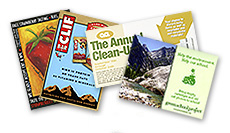
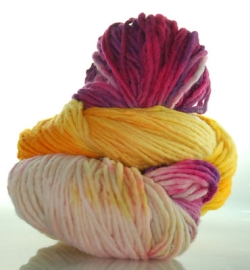
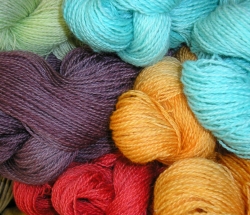
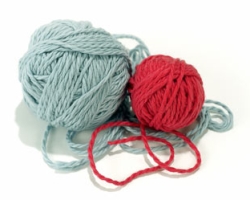
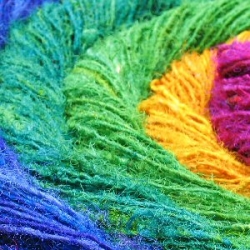
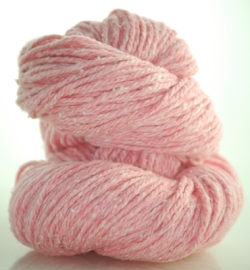

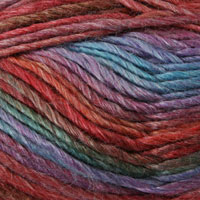
My granny used to collect unmatched socks (you know, those ones whose partners disappear forever in the dryer?) and use those as stuffing. It helps if you cut them up a bit, or it’ll be quite clumpy!
My granny used to collect unmatched socks (you know, those ones whose partners disappear forever in the dryer?) and use those as stuffing. It helps if you cut them up a bit, or it’ll be quite clumpy!
My granny used to collect unmatched socks (you know, those ones whose partners disappear forever in the dryer?) and use those as stuffing. It helps if you cut them up a bit, or it’ll be quite clumpy!
Great idea Rachel! I have so many lonely socks…
Great idea Rachel! I have so many lonely socks…
Great idea Rachel! I have so many lonely socks…
Pingback: Fabulous Fabrics: Near Sea Naturals : Crafting a Green World
My great-grandmother used old nylons to stuff things.
I’ve been using fabric scraps on my smaller plushies, but they still need a layer of batting to really feel right. For some markets, I use boiled pillowstuffing from pillows I got at the thrift store. However, some people get squicked out by that, so I have to be sure I have a “new” option. I’m about to try the corn fiberfill for that, but what I’d really like to see is stuffing made from old water bottles, like that craft felt. Think anyone will do it?
My great-grandmother used old nylons to stuff things.
I’ve been using fabric scraps on my smaller plushies, but they still need a layer of batting to really feel right. For some markets, I use boiled pillowstuffing from pillows I got at the thrift store. However, some people get squicked out by that, so I have to be sure I have a “new” option. I’m about to try the corn fiberfill for that, but what I’d really like to see is stuffing made from old water bottles, like that craft felt. Think anyone will do it?
My great-grandmother used old nylons to stuff things.
I’ve been using fabric scraps on my smaller plushies, but they still need a layer of batting to really feel right. For some markets, I use boiled pillowstuffing from pillows I got at the thrift store. However, some people get squicked out by that, so I have to be sure I have a “new” option. I’m about to try the corn fiberfill for that, but what I’d really like to see is stuffing made from old water bottles, like that craft felt. Think anyone will do it?
@lorigami
That’s a great idea! Be sure to add it to Autumn’s Eco-Crafter’s list of Demands
@lorigami
That’s a great idea! Be sure to add it to Autumn’s Eco-Crafter’s list of Demands
@lorigami
That’s a great idea! Be sure to add it to Autumn’s Eco-Crafter’s list of Demands
@lorigami
That’s a great idea! Be sure to add it to Autumn’s Eco-Crafter’s list of Demands
Pingback: Tools to Use: Batting : Crafting a Green World
The only problem with those fabrics made from recycled plastic bottles is that they retain all the chemicals and pthalates + added toxins in the recycling process. Many of them are carcinogens that I would rather not be putting near my skin. I would aim a notch higher and ask for stuffings(and most other textiles for that matter) be biodegradable and non-toxic such as Climatex Lifecycle(http://www.climatex.com/en/products/climatex_lifecycle_e.html). The water that comes out of this factory tested to be cleaner than the water that went in. If you were really hungry, you could eat this fabric. They turn the mill scraps into felt that can be used not only for crafts but to nourish your strawberry garden. I want that. 🙂
The only problem with those fabrics made from recycled plastic bottles is that they retain all the chemicals and pthalates + added toxins in the recycling process. Many of them are carcinogens that I would rather not be putting near my skin. I would aim a notch higher and ask for stuffings(and most other textiles for that matter) be biodegradable and non-toxic such as Climatex Lifecycle(http://www.climatex.com/en/products/climatex_lifecycle_e.html). The water that comes out of this factory tested to be cleaner than the water that went in. If you were really hungry, you could eat this fabric. They turn the mill scraps into felt that can be used not only for crafts but to nourish your strawberry garden. I want that. 🙂
The only problem with those fabrics made from recycled plastic bottles is that they retain all the chemicals and pthalates + added toxins in the recycling process. Many of them are carcinogens that I would rather not be putting near my skin. I would aim a notch higher and ask for stuffings(and most other textiles for that matter) be biodegradable and non-toxic such as Climatex Lifecycle(http://www.climatex.com/en/products/climatex_lifecycle_e.html). The water that comes out of this factory tested to be cleaner than the water that went in. If you were really hungry, you could eat this fabric. They turn the mill scraps into felt that can be used not only for crafts but to nourish your strawberry garden. I want that. 🙂
Thanks for including a link to my blog. This softie mamma does love her zombies!
Thanks for including a link to my blog. This softie mamma does love her zombies!
Thanks for including a link to my blog. This softie mamma does love her zombies!
I started using the lint that my dryer collects as stuffing. 🙂
I started using the lint that my dryer collects as stuffing. 🙂
I started using the lint that my dryer collects as stuffing. 🙂
I started using the lint that my dryer collects as stuffing. 🙂
Pingback: Upcycled Draft Catcher : Crafting a Green World
wow! i just stumbled onto this website. thanks for all the helpful comments and great ideas. i never thought of a good use for all that lint, though i’ve saved it. waste not, want not. 😉
wow! i just stumbled onto this website. thanks for all the helpful comments and great ideas. i never thought of a good use for all that lint, though i’ve saved it. waste not, want not. 😉
wow! i just stumbled onto this website. thanks for all the helpful comments and great ideas. i never thought of a good use for all that lint, though i’ve saved it. waste not, want not. 😉
Pingback: Laptop Pillow Made from Crafty Material : Crafting a Green World
Here in Singapore, because cotton is grown in our neighbouring countries Malaysia and Indonesia, we can buy loose cotton (like polyfil) in large bags for $3 (US$2). Are these likely to have pesticides on them? I used it as stuffing for the cotton stuffed animals I made for my kids.
Here in Singapore, because cotton is grown in our neighbouring countries Malaysia and Indonesia, we can buy loose cotton (like polyfil) in large bags for $3 (US$2). Are these likely to have pesticides on them? I used it as stuffing for the cotton stuffed animals I made for my kids.
Here in Singapore, because cotton is grown in our neighbouring countries Malaysia and Indonesia, we can buy loose cotton (like polyfil) in large bags for $3 (US$2). Are these likely to have pesticides on them? I used it as stuffing for the cotton stuffed animals I made for my kids.
Here in Singapore, because cotton is grown in our neighbouring countries Malaysia and Indonesia, we can buy loose cotton (like polyfil) in large bags for $3 (US$2). Are these likely to have pesticides on them? I used it as stuffing for the cotton stuffed animals I made for my kids.
Pingback: Ten Green Ways to Reuse, Repurpose and Upcycle Tin Cans : Crafting a Green World